Rank Higher on Google: The 17 Key SEO Tasks to complete today.
So you want to Rank Higher on Google? Improving your Google ranking isn’t easy – learn what your business must do to improve your placement.
Every SEO specialist wants to rank higher in search engines like Google. But, search rankings can make or break your business. According to this study, the number of daily Google searches is over 2 trillion, and the top 5 organic results account for 65% of the clicks.
You need to optimize the workflow to do more and do it better. The best way to maximize their SEO efforts is to automate every possible thing, as time is money. If you tweak your tasks higgledy-piggledy, it will take a lot of resources and time to finally achieve your purposes.
In this article, we recap the most significant SEO tasks you need to prioritize to rank higher on Google.
Prioritize Semantics
1. Gather Relevant Keywords
To rank higher on Google, you need to take time to find the right search terms. It’s important to take into consideration the user intent to correctly interpret the keywords you target.
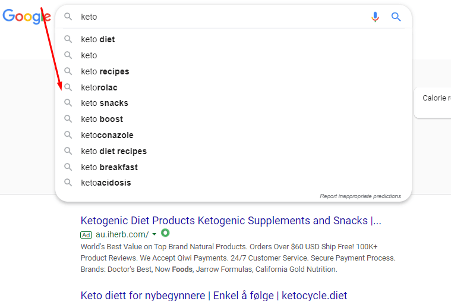
To come up with keyword ideas, you can use keyword suggestion tools like Answer The Public or Google Trends to see what keywords worth more of your focus. Consider search engine suggestions when gathering your list of keywords.
2. Find Competitor Keywords
Understanding what keywords your competitors are using for their marketing campaigns is one of the most powerful ways to add to your list of keywords another evaluation. If they rank well for particular keywords, it makes sense to boost rankings for them.
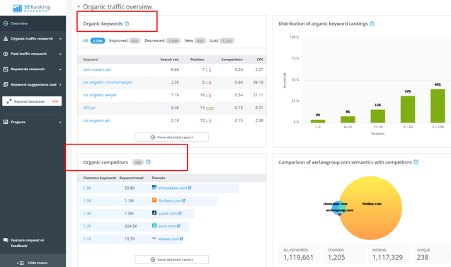
Spy on your competitors’ keywords from time to time to keep the scoop. You can keep track of competitor keywords in SE Ranking. Just enter a competitor’s URL in the SEO/PPC Competitor Research tool’s search field and get a list of different keyword variations that they use for their Google Ads campaigns and organic search.
3. Group Collected Keywords
Now you strongly believe that you have a solid semantic core in place. The next step is to organize your keywords into logical groups. Collecting keyword into groups will help you raise your search marketing efforts to a whole new level.
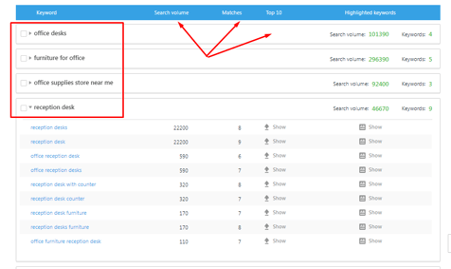
To save your time and efforts, you can use different keyword grouping tools. For example, Keyword Grouper from SE Ranking allows you to create a grouped list of keywords together with their search volume data and competition.
4. Remove Duplicate Keywords
If you want to build the ideal semantic core, make sure to delete all duplicate and repeated keywords. Duplicate keywords can degrade the performance of your marketing campaigns and create internal competition. If you want to follow the plan when monitoring rankings and spreading keywords among web pages, ensure to check for duplicate keywords.
According to Judy Blackwell from Hasner Law, once you make a list of keywords, ensure that you have a healthy mix of long-tail and head search terms. Try to revalue your keywords every three months. Once you start earning the authority in the SERPs, you should expand your keyword research and maintain your online presence.
Optimize On-Site Experience
5. Remove Page Duplicates
When search engines see several pages with duplicate content, there’s a high chance that it can hurt your SEO rankings. Once Google detects those page duplicates, it has to choose which one to rank. As a result, each of your web pages can have different rankings, page authority, and SEO juice.
Google itself said that multiple pages with identical content don’t explicitly hurt your website’s rankings, but it can hurt your rankings indirectly. So, it makes sense to delete your duplicate content and start with a clean slate.
6. Manage Broken Links
Broken links can lead to poor user experience and impact your SEO ranking. These pages waste energy and the valuable time of search engine robots and chase your visitors away. Sometimes broken links can happen because of a typo that can go unnoticed for months.
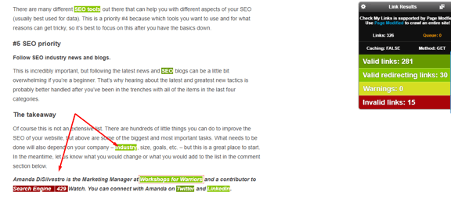
This is why you need to regularly conduct SEO audits on your site. To detect all broken links on your site, you can use a free Chrome extension called Check My Links. It highlights valid links in green and bad links in red.
7. Optimize Images for Search
Optimizing your images for SEO is one of the most important and simple ways to make your website more visible and rank higher on Google. According to this research, 80% of people read content, including images, and 64% of them are more likely to memorize them afterward.
If you want to increase your chances of appearing your image in search, take time to optimize them for search: include target keywords, Alt description, Alt texts, and file name. That will make your content more readable, relevant, and explicit in Google.
8. Optimize for Mobile
In the world of the mobile-first index, making your website mobile-friendly is a must. The best way to make your website look good on mobile screens is through a responsive design. You can use Google’s new resource that allows you to enhance mobile experiences.
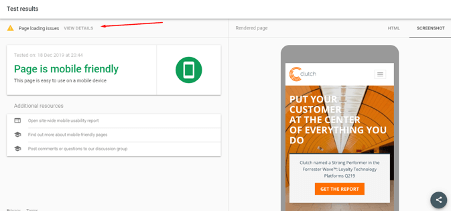
If you want to find out whether your site is mobile-friendly, you can enter a URL in the Mobile-Friendly Test and see the results. The tool provides reasons why it failed the test and gives actionable recommendations on how to fix them.
9. Check How Well a Page is Optimized
Once you write unique content, it’s essential to optimize it for search engines. For that, you need to consider some things, such as target keywords, keyword density, meta tags, titles, and URL within your page.
Make sure to include keywords in your title tags, headings, and meta tags. This will allow you to categorize your pages, better express what you want to convey, and send the right page to the right people. Keep your title tags unique within your website.
10. Check Page Load Speed
Most website owners often depreciate the importance of the page load time. As Google pointed out, 90% of visitors will leave a website after 5 seconds after page load. The probability of bounce increases by 106%.
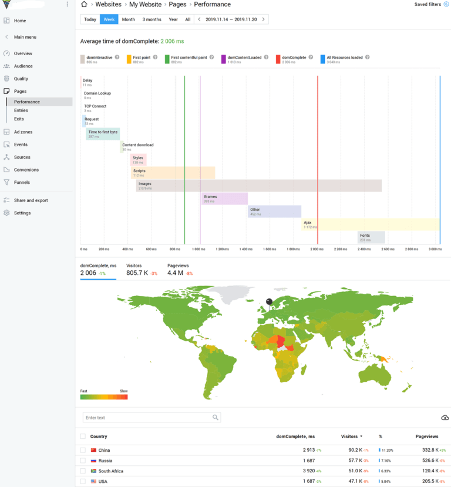
To get an advanced analysis of your site speed, you can try out Finteza to get real data and reliable diagnostics. The tool shows how what type of resources slow down your webpages, how your site loads on multiple devices and in multiple countries, how long visitors spend with your content, and how long it takes for them to view all webpages.
Remember Off-Site Optimization
11. Monitor Backlinks
SEO and backlinks go hand-in-hand. You can’t have one without the other. It’s important to monitor the quality and relevance of your backlinks as they significantly impact your website rankings and that’s the best way to reap the SEO rewards.
As Todd Lasky from Zavodnick, Zavodnick & Lasky, LLC( noted, backlinks are more valuable if they come from relevant sources. It’s very important to consider relevance and trust by searchers as a level of quality. I mean you need to get backlinks from high trust websites that are relevant to your field and trusted by searchers.
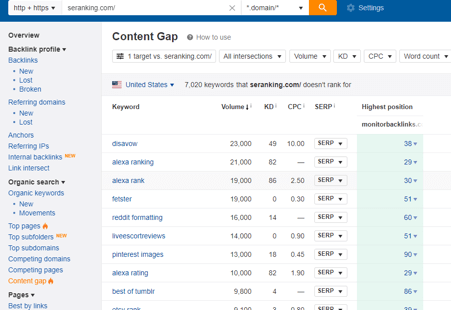
To research your link profile, you can use Ahrefs to quickly analyze your websites and your competitor’s websites. Doing so will help you get a clear idea about the quality and relevance of your backlink profile and identify new resources to link out on.
12. Analyze Backlink Anchor Texts
Google wants to ensure that the backlinks to your site are natural, and searchers are linking there because your website’s content drives value for your users. Your backlinks should get along with your SEO if you want any chance of moving up in the SERPs.
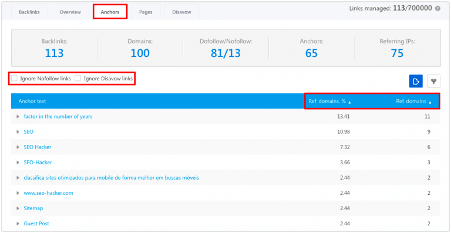
Don’t abuse exact match anchor texts. The best way to build natural backlinks is to diversify your anchor texts. Track the anchor texts you’ve used and avoid overusing those you’ve already used.
13. Set Up a Disavow File
If you are actively doing SEO for your website, there is a high chance that you get unnatural backlinks leading to your site. That can hurt your website in the eyes of Google. You can use Google’s Disavow tool to audit and disavow your links from start to finish.
Engage in Competitor Research and Analysis
14. Track Competitors’ Rankings
Ranking data is one of the most significant metrics businesses can measure to figure out how they rank against competitors in organic search.

By analyzing your competitors’ rankings, you can identify where they gain a competitive edge on you for the most important keywords and use that data to outrank them in search engines.
15. Get Insight Into Competitor Traffic
If you want to outstrip your key competitors, you need to know their traffic data. When you gather data from your competitors, you can figure out what works well and what doesn’t work for them to come up with the marketing strategy.
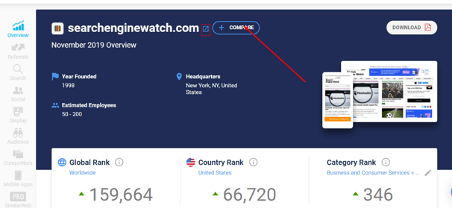
To derive comprehensive data about your rivals, you can use SimilarWeb to compare website traffic from two or more competitors.
Monitor Results
16. Set Up Rank Tracking
Whenever you start managing any SEO project, one of the first things you need to do is to set up keyword rank tracking. For tracking thousands of keywords in your semantic core, you should use rank tracking tools such as SE Ranking. When monitoring your rankings, consider things like location, search engines, and language.
17. Track Page Changes
If you have a large website that accesses a lot of team members to support and promote in search engines, some things can get out of control. It’s important to keep track of any unexpected modifications that might impact your site rankings before indexing by search robots. Monitor every single page change to avoid possible penalties, losses in rating, hacking or funds.
Need help with your SEO? Want to rank higher on Google? Reach out on our contact page, email us at Hello@GBpro.net or DM us on Instagram.

